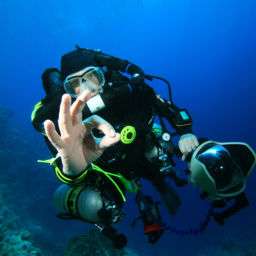
Scuba Diving in California Prices: A Comprehensive Guide
California’s diverse coastline offers a plethora of opportunities for underwater exploration, making scuba diving a popular activity. But before you take the plunge into the kelp forests and vibrant marine ecosystems, understanding the costs associated with scuba diving in California is crucial. This article will explore the various factors that influence scuba diving in California prices, from certification courses to equipment rentals and guided dive tours. Planning your dive budget effectively will ensure a safe and enjoyable experience exploring the Golden State’s underwater wonders.
Factors Influencing Scuba Diving Costs
Several key components contribute to the overall expense of scuba diving in California. These include:
- Certification Level: Entry-level certifications, like Open Water Diver, are generally less expensive than advanced courses such as Advanced Open Water or Rescue Diver.
- Location: Prices can vary based on the dive location. Popular tourist destinations or areas with limited accessibility might have higher costs.
- Dive Shop or Operator: Different dive shops offer varying price points, packages, and quality of service. Researching and comparing options is highly recommended.
- Equipment: Renting or purchasing equipment significantly impacts costs. Rentals are suitable for occasional divers, while investing in personal gear is more economical for frequent divers.
- Boat Dives vs. Shore Dives: Boat dives typically involve higher costs due to boat operation, fuel, and crew expenses. Shore dives are generally more affordable.
Breaking Down the Costs
Let’s delve into the specifics of each cost category:
Certification Courses
The PADI Open Water Diver certification, the most common entry-level certification, typically ranges from $400 to $700 in California. This includes instruction, course materials, pool sessions, and open water dives. Advanced courses, like Advanced Open Water, can range from $350 to $600.
Equipment Rental
Renting scuba gear can cost anywhere from $75 to $150 per day, depending on the location and the equipment needed. A full rental package usually includes a wetsuit, BCD (Buoyancy Compensator Device), regulator, mask, fins, and boots.
Guided Dive Tours
Guided dive tours, particularly boat dives, can range from $100 to $250 per dive, depending on the destination, duration, and included amenities. These tours often include transportation to the dive site, tanks, weights, and guidance from experienced divemasters.
Comparison Table: Sample Scuba Diving Costs
| Item | Estimated Cost |
|---|---|
| Open Water Diver Certification | $400 ౼ $700 |
| Daily Equipment Rental | $75 ౼ $150 |
| Boat Dive with Guided Tour | $100 ⏤ $250 |
Tips for Saving Money on Scuba Diving
There are several ways to reduce the costs associated with scuba diving:
- Shop around: Compare prices from different dive shops and operators.
- Consider group discounts: Many dive shops offer discounts for groups.
- Purchase your own equipment: If you plan to dive frequently, investing in your own gear can save money in the long run;
- Look for package deals: Some dive shops offer package deals that include certification, equipment rental, and guided dives.
- Dive during the off-season: Prices may be lower during the off-season.
EXPLORING FREE DIVING OPTIONS: AN ALTERNATIVE TO SCUBA
For those looking for a more minimalist and potentially less expensive way to experience the underwater world, consider free diving. Free diving, also known as breath-hold diving, requires specialized training and certification, but it eliminates the need for bulky scuba gear. While free diving has its own set of risks and requires a high level of physical and mental discipline, the initial investment can be lower than getting fully equipped for scuba diving. Courses typically range from $300 to $600, and the equipment needed is relatively simple: fins, mask, snorkel, and a wetsuit appropriate for the water temperature.
COMPARING SCUBA AND FREE DIVING COSTS: A QUICK GLANCE
Let’s compare the initial investment for both activities:
Activity
Initial Investment
Recurring Costs
Scuba Diving
$400 ⏤ $700 (Certification) + $800 ౼ $2000 (Equipment)
Tank refills, equipment maintenance, boat dives
Free Diving
$300 ౼ $600 (Certification) + $200 ౼ $500 (Equipment)
Travel to dive locations
FINDING AFFORDABLE DIVE LOCATIONS
Certain locations along the California coast offer more budget-friendly diving opportunities. Consider exploring areas less frequented by tourists or locations with easily accessible shore dives. Here are a few suggestions:
– Monterey Bay: Known for its kelp forests and diverse marine life, Monterey Bay offers numerous shore diving sites with relatively low entry fees.
– Channel Islands National Park: While boat trips are required to reach the islands, the park offers pristine diving conditions and abundant wildlife, often at a better value than more southern, heavily touristed locations. Look for smaller, local dive operators.
– La Jolla Cove: This protected marine reserve offers excellent shore diving and snorkeling opportunities. There’s no charge to enter the cove, making it a very affordable option.
Remember to always prioritize safety, regardless of your budget. Ensure you are properly certified and dive within your limits. Thoroughly research your dive location and check weather conditions before entering the water. Properly maintaining your equipment, whether rented or owned, is paramount for a safe diving experience. It’s quite common to find amazing opportunities for scuba diving in California prices that don’t break the bank if you are willing to put in the time to research your options. Happy diving!